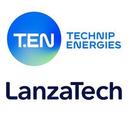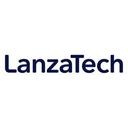PTT Global Chemical Public Company Limited (GC) and Honeywell signed a memorandum of understanding to study the feasibility of using Honeywell’s technology in the process of carbon capture and storage using Carbon Capture and Storage technology in GC Group plants and carbon utilization or Carbon Capture Utilization to achieve the goal of reducing net zero greenhouse gas emissions by 2050.
Toray to Install Pilot Facility to Establish Mass Production Technology for All-Carbon CO2 Separation Membrane
Toray Industries, Inc. announced that it will install a pilot facility for its all-carbon carbon dioxide (CO2) separation membrane at its Shiga Plant.
Technip Energies and LanzaTech Awarded DOE Funding for Commercializing Breakthrough CO2 to Ethylene Technology
Technip Energies and LanzaTech Global, Inc. announced that the U.S. Department of Energy (DOE) Office of Clean Energy Demonstrations has committed up to $200 million in federal funding and authorized the initiation of Project SECURE.
The U.S. Department of Energy Office of Clean Energy Demonstrations (OCED) opened applications for up to $1.3 billion in funding to catalyze investments in transformative carbon capture, utilization, and storage (CCUS) technologies.
Capsol Technologies ASA has been awarded a feasibility study for the CapsolEoP® (end-of-pipe) carbon capture solution by a global energy company at one of its oil refineries. The study is for a plant in Northern Europe aiming to capture 800,000 tons of CO2 per annum.
The BC Centre for Innovation and Clean Energy (CICE) is investing $590,000 in Ekona as part of a $4.2 million investment in seven BC climate tech companies, selected from 79 applicants to CICE’s July 2024 Call for Innovation.
Saipem has been awarded an offshore EPCI contract by BP Berau Ltd. The EPCI contract is part of an integrated project known as Tangguh UCC Project comprising of Ubadari field development, enhanced gas recovery through carbon capture, utilization and storage (EGR/CCUS) and onshore compression, operated by BP Berau Ltd and located in Papua Barat Province, Indonesia.
bp, on behalf of the Tangguh production sharing contract partners, announced a final investment decision on the $7 billion Tangguh Ubadari, CCUS, Compression project (UCC), which has the potential to unlock around 3 trillion cubic feet of additional gas resources in Indonesia to help meet growing energy demand in Asia.
Henkel Corporation and Celanese Corporation have announced a partnership to enhance circularity in emulsion production by utilizing carbon capture-based materials. Through this collaboration, Henkel will now produce water-based adhesives made from captured CO2 emissions.
Synata Bio, a U.S. company delivering turnkey carbon utilization technology to transform on-site waste gases into ethanol, has been awarded a $4.5 million grant from China’s National Development and Reform Commission (NDRC) for its Sylonto project.
Carbon Upcycling, MnDOT and NRRA Joint Study Shows High-Performance Low-Carbon Concrete is 30% Stronger than Existing Roadways
Carbon Upcycling, the Minnesota Department of Transportation (MnDOT) and the National Road Research Alliance (NRRA) has successfully completed a three-year study on the use of low-carbon cement in highways. The results highlight Carbon Upcycling's ability to be a drop-in solution for reducing carbon-intensive cement in concrete.
Electrification and CCUS Identified as Keys to Decarbonizing the Cement Industry in New White Paper from ABB
ABB has launched a new white paper, detailing the challenges the global cement industry must tackle to decarbonize operations in line with global emissions reduction targets and the vital role technology will play in the success of this endeavor.
Kruger Inc. announced a $23.75 million investment in an innovative demonstration project for carbon capture and reuse at its Wayagamack Mill in Trois-Rivières.
LanzaTech Global, Inc. announced plans to develop a commercial-scale Carbon Capture and Utilization (“CCU”) facility at Herøya Industrial Park in Porsgrunn, Norway. The plant will produce ethanol and is expected to begin operations in 2028. Eramet will supply furnace gas as feedstock to the facility from the Porsgrunn Manganese Alloys smelter but will not participate in its financing.
We hear a lot about CO2, but how much do we know about its importance to life on this planet? CO2 isn’t just a molecule, a by-product, or a greenhouse gas; it’s the essential molecule vehicle for moving carbon around in its depleted state.
Senator John Hoeven announced that the U.S. Department of Energy (DOE) has awarded more than $48.6 million in support of Project Tundra, a carbon capture, utilization and storage (CCUS) effort led by Minnkota Power Cooperative. The funding is being awarded to the DCC East Project in Grand Forks.
Holcim has been selected for a new grant from the European Union (EU) Innovation Fund for its breakthrough carbon capture and storage project in Martres-Tolosane, France. This grant for the CarboClearTech project brings the number of Holcim’s large-scale EU-supported carbon capture, utilization and storage (CCUS) projects to seven, advancing the European Green Deal.
Embarking on a Carbon Capture, Utilization, and Storage (CCUS) project is a significant step towards environmental stewardship and regulatory compliance.
Speaking at Wood Mackenzie’s Carbon Capture, Utilization and Storage Conference in Houston, Peter Findlay, research director and head of CCUS economics for Wood Mackenzie, said that despite a growing market for carbon capture, utilization and storage (CCUS), economics remain challenging, and many potential projects are at risk.
The U.S. Department of Energy (DOE) Office of Clean Energy Demonstrations (OCED) issued a Notice of Intent to fund up to $1.3 billion to catalyze investments in transformative carbon capture, utilization, and storage (CCUS) technologies.
Baker Hughes, an energy technology company, announced the launch of CarbonEdge™, powered by Cordant™, the first end-to-end, risk-based digital platform for CCUS (carbon capture, utilization, and storage) operations that provides comprehensive support, regulatory reporting, and operational risk management.
Oxylus Energy, developer of a novel carbon utilization technology for the production of e-fuels, announced the close of its $4.5 million Series Seed investment co-led by Toyota Ventures and Azolla Ventures with participation from Earth Foundry and Connecticut Innovations. Oxylus' solution is the first low-temperature and low-pressure conversion of carbon dioxide to green methanol, a liquid fuel.
The Vietnam Petroleum Institute has commissioned Black & Veatch to study carbon-cutting technologies at three coal-fired power plants owned by Vietnam Oil and Gas Group. The study’s objective is to investigate the current carbon capture technology landscape and evaluate the feasibility and effectiveness of applying that technology to the flue gas from the coal-fired power plants.
Enhancing Indonesia’s CCUS and CCS capabilities, BP Berau Ltd (bp) – as the operator of TangguhProduction Sharing Contract -- and Bandung Institute of Technology signed a Cooperation Agreement to advance research and development of carbon capture, utilization and storage.
Sora Fuel, a startup producing sustainable aviation fuel using only water, air and renewable energy, announced it has raised an oversubscribed $6 million seed round. The funding will be used to expand Sora Fuel’s Boston-based team, develop commercialization partnerships and further advance the company’s novel technology.
On July 31st in Anchorage Alaska Governor Mike Dunleavy signed three energy bills into law, one being HB 50. This will create a regulatory framework for the State of Alaska to utilize its geologic resources for carbon capture, utilization and storage.
Methanex Corporation and Entropy Inc. have entered into an agreement to invest in a Preliminary Front-End Engineering and Design study for carbon capture, utilization and sequestration (“CCUS”) deployment at Methanex’s Medicine Hat, Alberta facility.
DNV has validated the methodology developed and used by Carbon8, an innovative cleantech company specializing in helping hard-to-abate industries reduce carbon emissions and landfilling of thermal residues. Carbon8’s patented technology permanently captures CO2 at source from hard-to-abate industries and DNV has verified that Carbon8’s methodology satisfies the ISO 14064 part 2 standard.
Enerflex and BASF have entered into a memorandum of understanding to jointly facilitate the commercial scale deployment of carbon capture, utilization and storage (CCUS) applications.
Lafarge Canada Inc. and Canadian carbon technology innovator Hyperion Global Energy Corp. announced the launch of Hyperion’s patented Tandem Carbon Recycling System© pilot.
Advertisement






























